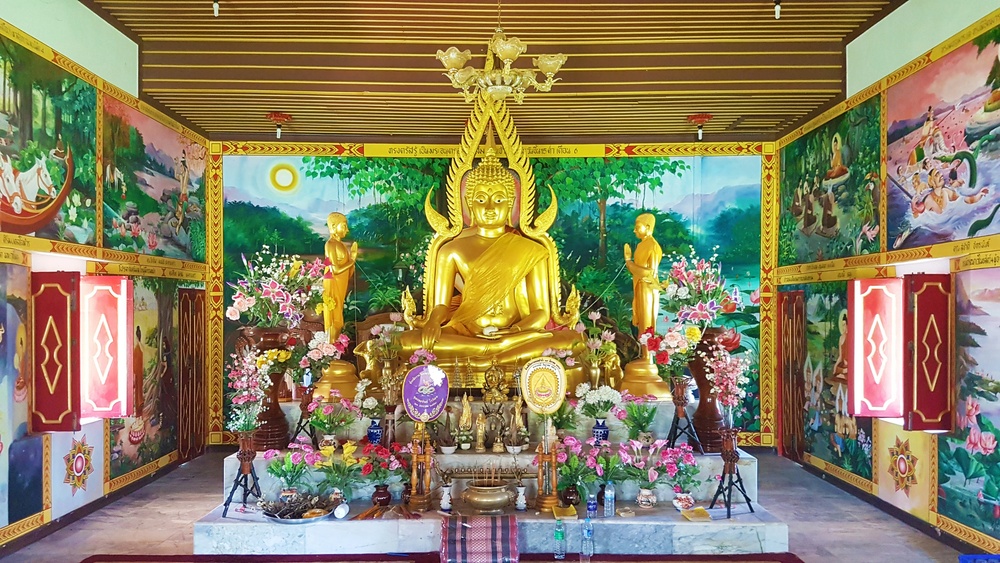A Complete Guide to the Most Revered Buddhist Tourist Destinations in India
India, the birthplace of Buddhism, is home to some of the world’s most sacred and historically significant Buddhist sites. From the spot where Siddhartha Gautama attained enlightenment to the serene monasteries nestled in the Himalayas, India offers a profound spiritual and cultural journey. These sacred places are not only important pilgrimage sites but also reflect the deep roots and evolution of Buddhism across centuries.
In this complete guide, we explore the most revered Buddhist tourist destinations in India—places that continue to inspire millions of spiritual seekers, pilgrims, and travelers from around the world.
1. Bodh Gaya, Bihar – The Place of Enlightenment
At the top of any Buddhist pilgrimage in India is Bodh Gaya, where Prince Siddhartha meditated under the Bodhi Tree and attained enlightenment to become the Buddha. The Mahabodhi Temple, a UNESCO World Heritage Site, stands as a timeless symbol of spiritual awakening.
The complex also includes the sacred Bodhi Tree, Vajrasana (the Diamond Throne), and numerous monasteries built by various Buddhist nations. As the holiest of all Buddhist tourist destinations in India, Bodh Gaya offers an atmosphere of deep peace and reflection.
2. Sarnath, Uttar Pradesh – The First Sermon
Located near Varanasi, Sarnath is where the Buddha gave his first sermon, known as the “Turning of the Wheel of Dharma.” This marked the beginning of the Buddhist Sangha (monastic community).
The Dhamek Stupa, Chaukhandi Stupa, and Ashokan Pillar are the major landmarks. The Sarnath Museum, home to the famous Lion Capital of Ashoka (India’s national emblem), adds historical depth to the site. Sarnath holds a special place among Buddhist tourist destinations in India for its profound historical significance.
3. Kushinagar, Uttar Pradesh – The Final Nirvana
Kushinagar is revered as the site where Lord Buddha attained Mahaparinirvana (final liberation) after his earthly life. The Mahaparinirvana Temple, featuring a massive reclining Buddha statue, is the focal point of the town.
The Ramabhar Stupa, where his body was cremated, and several international monasteries make Kushinagar a peaceful and sacred destination. It is one of the key sites in the Buddhist pilgrimage circuit known as the Mahaparinirvana Trail.
4. Rajgir, Bihar – Center of Buddhist Teachings
Surrounded by scenic hills, Rajgir was an important site during Buddha’s lifetime. He delivered several discourses here and spent many monsoon retreats. The Griddhakuta Hill (Vulture’s Peak) was a frequent location for his teachings.
The Vishwa Shanti Stupa, built by Japanese Buddhists and accessed via ropeway, and the remains of ancient monasteries give Rajgir both spiritual and archaeological significance. It also hosted the First Buddhist Council after Buddha’s death.
5. Nalanda, Bihar – The Seat of Ancient Wisdom
Located near Rajgir, Nalanda was one of the world’s earliest residential universities and a global center for Buddhist learning. It flourished between the 5th and 12th centuries CE and attracted scholars from Tibet, China, and Southeast Asia.
The Nalanda University ruins, a UNESCO World Heritage Site, and the Nalanda Archaeological Museum provide insights into the academic richness of ancient Buddhism in India.
6. Shravasti, Uttar Pradesh – Miracles and Monastic Life
Shravasti was a favored residence of the Buddha, where he spent 24 rainy seasons teaching and meditating. The Jetavana Monastery, one of the oldest monasteries, still draws pilgrims for meditation and reflection.
Other important ruins include Anathapindika’s Stupa and various stupas and shrines. As one of the less commercialized but deeply spiritual Buddhist tourist destinations in India, Shravasti offers tranquility and insight.
7. Sanchi, Madhya Pradesh – The Art of Buddhist Symbolism
Sanchi is best known for the Great Stupa, built by Emperor Ashoka in the 3rd century BCE. It is among the oldest stone structures in India and features intricately carved toranas (gateways) that depict scenes from the Jataka tales and Buddha’s life.
This UNESCO World Heritage Site is not associated with the Buddha’s life directly but is revered for its remarkable art, architecture, and symbolism. It reflects how Buddhism spread and evolved through royal patronage.
8. Tawang, Arunachal Pradesh – Himalayan Monastic Heritage
Nestled in the Eastern Himalayas, Tawang is home to the largest Buddhist monastery in India, the Tawang Monastery. This 17th-century Gompa follows the Gelugpa (Yellow Hat) sect of Tibetan Buddhism.
With snow-capped peaks in the backdrop, chanting monks, and vibrant festivals, Tawang offers a spiritual and cultural experience unlike any other. It is one of the most visually stunning Buddhist tourist destinations in India.
9. Ladakh, Jammu & Kashmir – High-Altitude Spirituality
Ladakh is renowned for its rich Tibetan Buddhist culture. Monasteries like Hemis, Thiksey, Diskit, and Alchi showcase intricate murals, massive Buddha statues, and sacred relics.
The region’s remoteness and stunning natural beauty amplify the spiritual energy, making it ideal for meditation, retreats, and introspection. Ladakh is perfect for travelers seeking a combination of scenic adventure and spiritual depth.
10. Darjeeling & Kalimpong, West Bengal – Monasteries Amid Nature
The serene hill towns of Darjeeling and Kalimpong are home to beautiful monasteries such as Ghoom Monastery and Zang Dhok Palri Phodang. These places offer a unique blend of Tibetan Buddhist tradition, Himalayan culture, and peaceful landscapes.
The fluttering prayer flags, chanting monks, and mountain mist together create a meditative environment that draws spiritual seekers year-round.
Conclusion
The Buddhist tourist destinations in India form a sacred tapestry that connects places where the Buddha lived, taught, meditated, and attained liberation. Each site carries a story that offers insights into the Buddha’s life and teachings, making them not just historical landmarks but living centers of spiritual learning and reflection.
Whether you’re a devout follower, a curious traveler, or someone on a path of self-discovery, these destinations offer peace, perspective, and a deeper connection to one of the world’s greatest spiritual traditions. Embark on this journey and let the timeless wisdom of Buddhism guide you toward inner calm and enlightenment.

